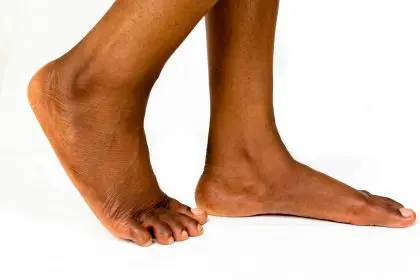Our legs and feet are the pillars that carry us through life, enabling us to explore the world with every stride. Unfortunately, leg and foot amputations remain a significant concern, particularly among individuals with diabetes, peripheral artery disease, and chronic infections. While amputations may be necessary in severe cases, there are proactive measures we can take to protect our limbs and maintain mobility.
1. Manage diabetes effectively
Diabetes, a condition characterized by elevated blood sugar levels, is a leading cause of leg and foot amputations. Over time, uncontrolled blood sugar can damage nerves and blood vessels, leading to poor circulation and increased susceptibility to infections.
To reduce the risk of amputation, individuals with diabetes should maintain strict control over their blood sugar levels through medication, diet, and exercise. Regular monitoring of blood sugar levels and prompt treatment of any foot ulcers or infections are crucial in preventing complications.
2. Address peripheral artery disease (PAD)
PAD, a condition characterized by narrowed or blocked arteries in the legs, can significantly restrict blood flow, leading to tissue damage and increasing the risk of amputation. Symptoms of PAD include pain or cramping in the legs, especially when walking or exercising, and sores or ulcers that don’t heal.
Early diagnosis and treatment of PAD are essential to prevent amputations. Lifestyle modifications like smoking cessation and regular exercise can improve blood flow. Medications or surgical interventions may sometimes be necessary to restore blood circulation.
3. Maintain Proper Foot Care
Regular foot care is crucial for preventing amputations, especially for individuals with diabetes or PAD. Daily foot checks should be performed to identify any cuts, sores, or blisters. These should be cleaned and dressed immediately to prevent infection.
Wearing correctly fitting shoes is essential to prevent pressure sores and injuries. Avoid tight-fitting shoes or high heels, and choose footwear with good arch support and cushioning. Regular podiatric visits can help identify and address any foot problems early on.
4. Treat infections promptly
Infections, particularly in the feet, can rapidly progress and lead to tissue death, increasing the risk of amputation. Individuals with diabetes or PAD are more susceptible to infections due to poor circulation.
Early detection and treatment of infections are crucial. Any signs of infection, such as redness, swelling, warmth, or pain, should be reported to a healthcare provider immediately. Prompt antibiotic therapy and wound care can prevent the spread of infection and the need for amputation.
5. Quit smoking
Smoking is a significant risk factor for PAD and amputation. Smoking damages blood vessels and reduces blood flow to the legs, increasing the likelihood of tissue damage and infection.
Quitting smoking is one of the most effective measures individuals can take to improve their overall health and reduce their risk of amputation. Smoking cessation programs and support groups can provide guidance and assistance in quitting this harmful habit.
6. Maintain a healthy weight
Excess weight puts additional strain on the legs and feet, exacerbating existing vascular problems and increasing the risk of amputation. Losing weight can significantly reduce the risk of complications and improve overall health.
Adopting a healthy diet and engaging in regular physical activity are effective ways to achieve and maintain a healthy weight. You can consult a healthcare provider or a registered dietitian for personalized weight management strategies.
7. Regular check-ups with your health care provider
Regular check-ups with your healthcare provider are essential for the early detection and management of any conditions that may increase the risk of amputation. These visits provide an opportunity to discuss concerns, monitor blood sugar levels, assess foot health, and receive appropriate treatment.
Open communication with your healthcare provider is crucial in preventing amputations. Feel free to ask questions about your condition, treatment options, and preventive measures.
Amputations can profoundly impact an individual’s mobility, independence, and quality of life. By adopting preventive measures, such as managing diabetes effectively, maintaining proper foot care, and quitting smoking, can significantly reduce the risk of amputation.
This story was created using AI technology.













